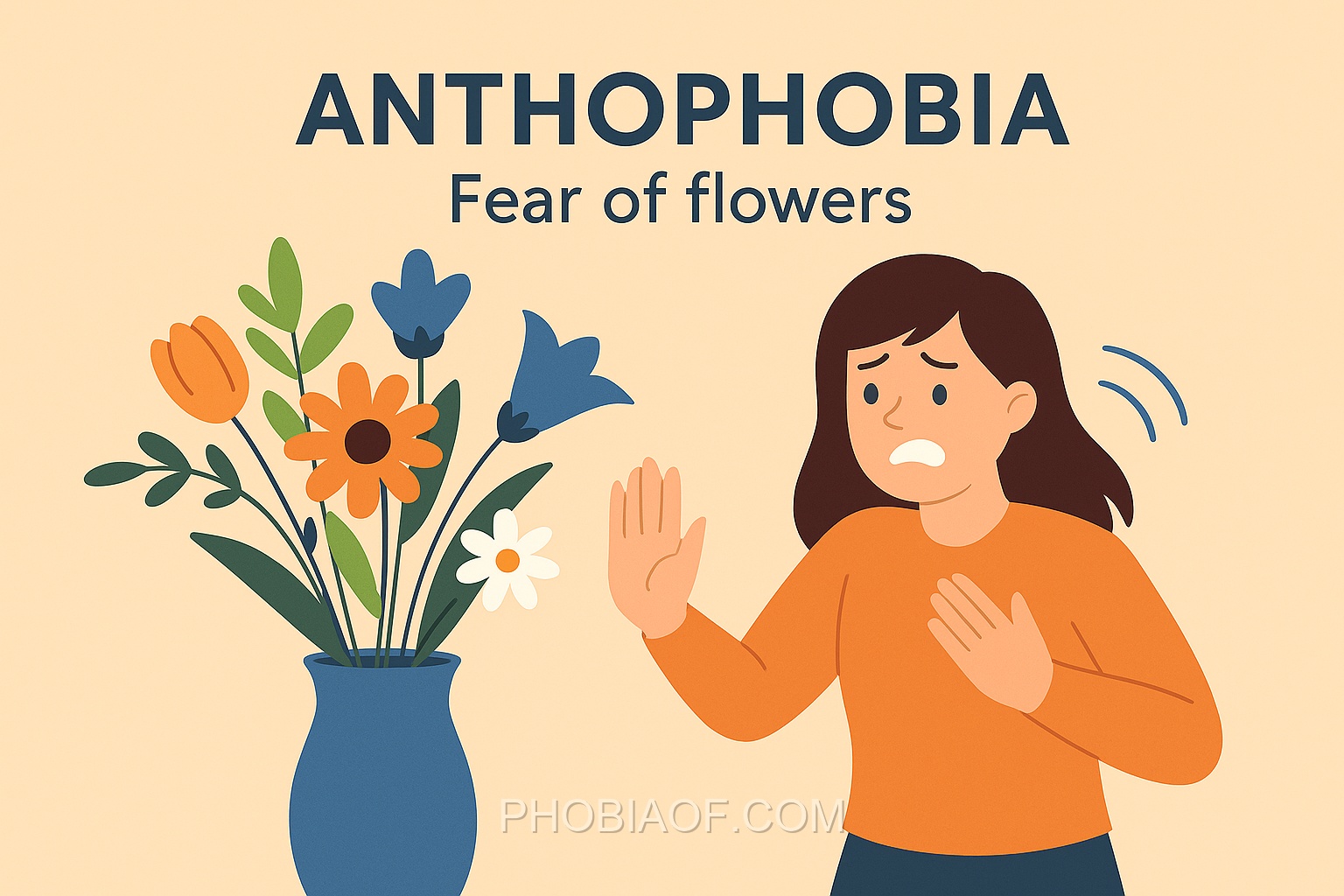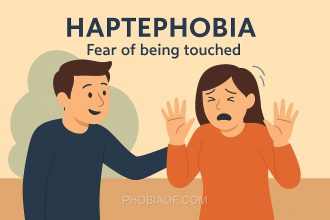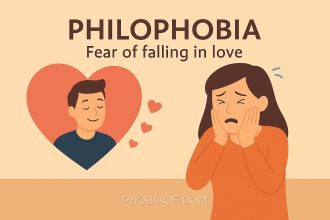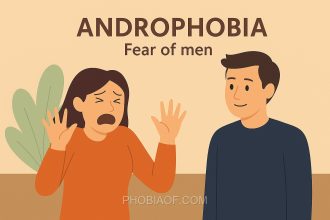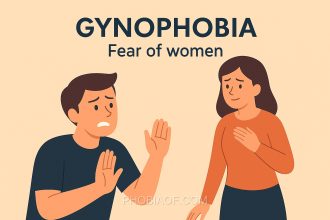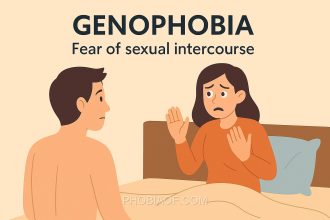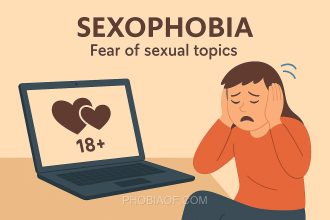Have you ever felt uneasy or anxious at the sight of a flower, something most people find beautiful and harmless? If so, you might be experiencing Anthophobia, a term that might sound as exotic as it feels to those who suffer from it.
Anthophobia is the fear of flowers. Derived from the Greek words “anthos,” meaning flower, and “phobos,” meaning fear, this condition involves an irrational and overwhelming fear of flowers. While it might seem unusual, Anthophobia is very real for those affected by it, causing significant distress in situations where flowers are present.
For individuals with Anthophobia, their fear can manifest in various ways, affecting their daily lives. Common reactions may include:
- Experiencing anxiety or panic attacks at the sight or even thought of flowers.
- Avoiding places where flowers are likely to be, such as gardens, parks, or even certain social events.
- Having physical symptoms, such as sweating, trembling, or a rapid heartbeat, when encountering flowers.
Understanding and empathizing with those who have Anthophobia is essential. It’s not simply a dislike of flowers; it’s a phobia that can significantly impact one’s life. Through compassionate awareness and appropriate support, individuals with Anthophobia can find ways to manage their fear and navigate a world that often takes the beauty of flowers for granted.
Causes of Anthophobia
Anthophobia, or the fear of flowers, can arise from various psychological, environmental, and genetic factors. Understanding these causes can shed light on why someone might develop this unusual fear.
- Genetic Predisposition:
Some individuals may have a genetic tendency towards anxiety disorders, which can include specific phobias like anthophobia. If a person has a family history of phobias or anxiety, they might be more susceptible to developing similar issues.
- Traumatic Experiences:
A distressing encounter involving flowers, such as a severe allergic reaction or an accident in a garden, can trigger a lifelong fear. The memory of the event can cause anxiety whenever the person is near flowers.
- Learned Behavior:
Observing a parent or close individual who displays a fear of flowers can lead to a learned behavior. Children, in particular, are impressionable and may adopt the fears of those around them.
- Environmental Factors:
Environmental influences such as cultural attitudes towards flowers, or media portrayals that associate flowers with negative events, can contribute to anthophobia. These factors can shape perceptions and create anxiety around flowers.
- Other Psychological Factors:
Conditions like generalized anxiety disorder or obsessive-compulsive disorder can also manifest as specific phobias, including anthophobia. The fear of flowers might be linked to broader anxiety issues that require attention.
While the exact origin of anthophobia can vary, these factors often interplay to influence its development. Research continues to explore the complexities of phobias, offering greater insights into their origins and potential treatments.
Symptoms of Anthophobia
Anthophobia, the fear of flowers, can evoke intense fear or anxiety in individuals who experience it. This phobia can manifest in various ways, affecting both the mind and body. Recognizing these symptoms can be the first step toward understanding and seeking help. Here are some common symptoms:
- Intense Fear or Anxiety: A person with anthophobia may experience overwhelming fear at the thought or sight of flowers.
- Panic Attacks: Sudden onset of intense fear or discomfort, characterized by heart palpitations, shortness of breath, or a feeling of impending doom.
- Sweating: Excessive perspiration, especially when confronted with flowers or situations involving flowers.
- Rapid Heartbeat: An accelerated heart rate when exposed to flowers, either physically or mentally.
- Avoidance of Triggers: Deliberately avoiding places or situations where flowers might be present, such as gardens, parks, or floral shops.
- Overwhelming Dread: An intense sense of dread or distress when anticipating or encountering flowers.
- Nausea or Dizziness: Feeling lightheaded or nauseous when near flowers.
- Emotional Distress: Feelings of helplessness or being out of control due to the fear of flowers.
If this phobia becomes severe, it can significantly interfere with daily life, making it challenging to engage in regular activities or enjoy environments where flowers are present.
Treatment for Fear of Flowers
Overcoming a fear of flowers, known as Anthophobia, is entirely possible with the right treatment and coping strategies. While it may feel overwhelming, rest assured that with time, patience, and professional guidance, this phobia can be effectively managed.
There are several proven therapies that can help you face and overcome this fear:
- Exposure Therapy: This therapy involves gradually facing your fear in a controlled and safe environment. By slowly exposing yourself to flowers, starting perhaps with pictures and moving to real-life encounters, you can reduce anxiety over time.
- Cognitive-Behavioral Therapy (CBT): CBT helps in identifying and changing negative thought patterns associated with flowers. By reframing these thoughts, you can alter your emotional response and reduce fear.
- Counseling: Speaking with a counselor can provide emotional support and help you explore underlying causes of the phobia, offering a pathway to understanding and overcoming your fear.
In addition to therapy, there are self-help coping techniques that can complement your treatment:
- Relaxation Exercises: Practices such as deep breathing, progressive muscle relaxation, and guided imagery can help calm your mind and reduce anxiety.
- Meditation: Regular meditation can enhance mindfulness and diminish stress, helping you approach feared situations with a clearer, more relaxed mindset.
- Support Groups: Joining a support group can provide a sense of community and shared experiences. Talking with others who understand can be incredibly reassuring and empowering.
For severe cases, medication such as anti-anxiety medications may be considered, but the focus should largely remain on therapy and developing coping skills.
If Anthophobia is interfering with your daily life, it’s crucial to seek professional help. A mental health professional can tailor a treatment plan specific to your needs and guide you on the path to overcoming your fear.
Remember, taking the first step towards seeking help is a brave and significant move. With dedication and support, you can manage and overcome your fear of flowers.
Conclusion
Understanding Anthophobia, the fear of flowers, begins with recognizing its causes and symptoms. By gaining insight into what triggers this phobia and how it manifests, individuals can take the first steps towards managing and overcoming their fears. Awareness is a powerful tool, and being informed about Anthophobia can empower you to address it with confidence and clarity.
Remember, you are not alone in this journey. Many people successfully manage or even overcome their phobias with time and the right support. It’s important to approach this process with patience and self-compassion. If you find that your fear of flowers is affecting your daily life, consider seeking help from a therapist or talking to a doctor. Professional guidance can provide you with effective strategies and support tailored to your needs.
Embrace the possibility of change and growth. With perseverance and the right resources, you can navigate through Anthophobia and emerge stronger and more resilient. Take this opportunity to open a dialogue about your fears, knowing that help is available and that many have walked this path before you, finding peace and comfort along the way.
